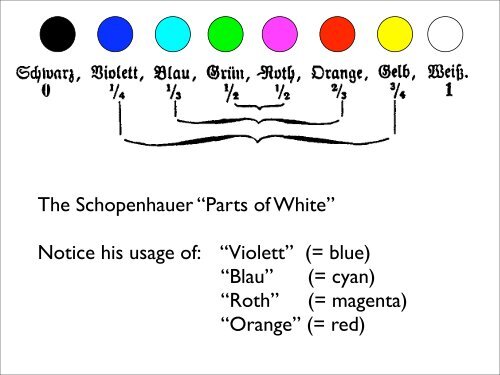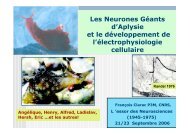La Nature se dévoilant devant la Science
La Nature se dévoilant devant la Science
La Nature se dévoilant devant la Science
Create successful ePaper yourself
Turn your PDF publications into a flip-book with our unique Google optimized e-Paper software.
1. Aguilonius's color <strong>se</strong>quence [17]: from white, through yellow, red and blue to bl<br />
~d}luar~, ~iotctt, ~S<strong>la</strong>u, ~tiiu, ~at~, ~3tanae, Oelb, ~r<br />
0 '/, '/, y, '/2 2/, '/, 1<br />
2. Schopenhauer's color <strong>se</strong>quence [3]: from b<strong>la</strong>ck, through violet, blue, green, ora<br />
llow to white. Goethe's three pairs of contrasting colors, including their white conte<br />
The Schopenhauer “Parts of White”<br />
Notice his usage of: “Violett” (= blue)<br />
e light and the 'shadowy' are not always so thoroughly, as it we<br />
“B<strong>la</strong>u” (= cyan)<br />
ically', mixed: alongside the 'qualitative' color-creating activity of t<br />
there is also quantitative 'mechanical' blending. This produces the gr<br />
“Roth” (= magenta)<br />
from white through various degrees of gray to b<strong>la</strong>ck. Light is thus dete<br />
“Orange” (= red)<br />
by two <strong>se</strong>parate variables: the qualitative and the quantitative retin<br />
ties. Schopenhauer's theory of light and colors has two dimensions.




